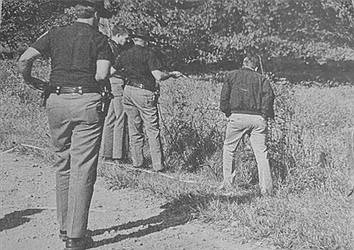Hummingbirds in Indiana: A look at these small but meaningful visitors
April 26, 2023 at 6:23 p.m.

Hummingbirds are small, colorful birds with unique abilities that make them stand out in the avian world. With their long, thin beaks and wings that beat at lightning-fast speeds, these tiny creatures are a joy to watch.
Found only in the Western hemisphere, specifically in the Americas, hummingbirds are known for their ability to hover in mid-air, a feat made possible by powerful wings that can beat up to 80 times per second. They are also the only birds capable of flying backward and upside down, thanks to these highly maneuverable wings.
Hummingbirds are also known for their striking plumage. Male hummingbirds are particularly colorful, with iridescent feathers that shine in the sunlight. The colors of their feathers are created by the way light reflects off microscopic structures on their feathers, rather than by pigments in their feathers.
And don’t let their size fool you. They may be small, but they are fiercely territorial and will defend their space from other birds, often engaging in aerial battles. They are also known for their high energy levels - hummingbirds have the highest metabolism of any bird, and sometimes consume up to twice their body weight in nectar each day just to survive.
Indiana is home to several species of hummingbirds, including the Ruby-throated Hummingbird, the Rufous Hummingbird, and the Broad-tailed Hummingbird. These tiny birds are fun to watch as they flit and hover around feeders and flowers.
The Ruby-throated Hummingbird is the most common species in Indiana, and is easily recognized by its bright red throat patch. These birds typically arrive in Indiana in late April or early May. The Rufous Hummingbird is a less common sight in Indiana, but can be spotted during its fall migration. These birds are known for their stunning orange-red plumage and their long migration routes - they travel up to 3,000 miles each way between their breeding grounds in the Pacific Northwest and their wintering grounds in Mexico. The Broad-tailed Hummingbird is a rare visitor to Indiana, but has been spotted in the state during its fall migration. These birds are known for their distinctive whistling sound, which is created by the movement of their wings.
Hummingbirds play an important role in Indiana's ecosystems as pollinators of flowers and plants, and as a food source for larger birds and mammals. To attract hummingbirds to your yard, set up a hummingbird feeder filled with a solution of four parts water to one part sugar. You can also plant flowers that are attractive to hummingbirds, such as Ohio Buckey, Orange jewelweed, Trumpet honeysuckle and trumptet creeper.
The Indiana Audobon Society made a great list of “fun facts” about the Ruby Throated Hummingbird, check these out:
They’re able to fly forwards, backwards, sideways, up, down, and stop and hover in one spot (and for short distances they can even fly upside-down).
They can fly up to 60 miles per hour.
They can flap their wings 60-80 times per second in normal flight…but can beat them 200 times per second during courtship dives.
At rest, their heart beats around 250 times per minute, but during flight their heart beats about 1300 times per minute.
They migrate for thousands of miles…but the most fascinating thing about their migration is that many make a huge jump across the Gulf of Mexico. A trip of about 500-600 miles, which they are able to do non-stop. (All from a bird that weighs only 0.1 ounce.)
They almost consume their entire weight in nectar, sap, sugar water, and insects every day. When in its active state, a hummingbird will starve to death if it doesn’t eat every few hours.
Hummingbirds are not only the world’s smallest bird, but the smallest known animal with a backbone.
Hummingbird eggs are so small, that a penny could cover three of them completely.
Hummingbirds can see and hear better than we humans, but they cannot smell.
Latest News
E-Editions
Events
Hummingbirds are small, colorful birds with unique abilities that make them stand out in the avian world. With their long, thin beaks and wings that beat at lightning-fast speeds, these tiny creatures are a joy to watch.
Found only in the Western hemisphere, specifically in the Americas, hummingbirds are known for their ability to hover in mid-air, a feat made possible by powerful wings that can beat up to 80 times per second. They are also the only birds capable of flying backward and upside down, thanks to these highly maneuverable wings.
Hummingbirds are also known for their striking plumage. Male hummingbirds are particularly colorful, with iridescent feathers that shine in the sunlight. The colors of their feathers are created by the way light reflects off microscopic structures on their feathers, rather than by pigments in their feathers.
And don’t let their size fool you. They may be small, but they are fiercely territorial and will defend their space from other birds, often engaging in aerial battles. They are also known for their high energy levels - hummingbirds have the highest metabolism of any bird, and sometimes consume up to twice their body weight in nectar each day just to survive.
Indiana is home to several species of hummingbirds, including the Ruby-throated Hummingbird, the Rufous Hummingbird, and the Broad-tailed Hummingbird. These tiny birds are fun to watch as they flit and hover around feeders and flowers.
The Ruby-throated Hummingbird is the most common species in Indiana, and is easily recognized by its bright red throat patch. These birds typically arrive in Indiana in late April or early May. The Rufous Hummingbird is a less common sight in Indiana, but can be spotted during its fall migration. These birds are known for their stunning orange-red plumage and their long migration routes - they travel up to 3,000 miles each way between their breeding grounds in the Pacific Northwest and their wintering grounds in Mexico. The Broad-tailed Hummingbird is a rare visitor to Indiana, but has been spotted in the state during its fall migration. These birds are known for their distinctive whistling sound, which is created by the movement of their wings.
Hummingbirds play an important role in Indiana's ecosystems as pollinators of flowers and plants, and as a food source for larger birds and mammals. To attract hummingbirds to your yard, set up a hummingbird feeder filled with a solution of four parts water to one part sugar. You can also plant flowers that are attractive to hummingbirds, such as Ohio Buckey, Orange jewelweed, Trumpet honeysuckle and trumptet creeper.
The Indiana Audobon Society made a great list of “fun facts” about the Ruby Throated Hummingbird, check these out:
They’re able to fly forwards, backwards, sideways, up, down, and stop and hover in one spot (and for short distances they can even fly upside-down).
They can fly up to 60 miles per hour.
They can flap their wings 60-80 times per second in normal flight…but can beat them 200 times per second during courtship dives.
At rest, their heart beats around 250 times per minute, but during flight their heart beats about 1300 times per minute.
They migrate for thousands of miles…but the most fascinating thing about their migration is that many make a huge jump across the Gulf of Mexico. A trip of about 500-600 miles, which they are able to do non-stop. (All from a bird that weighs only 0.1 ounce.)
They almost consume their entire weight in nectar, sap, sugar water, and insects every day. When in its active state, a hummingbird will starve to death if it doesn’t eat every few hours.
Hummingbirds are not only the world’s smallest bird, but the smallest known animal with a backbone.
Hummingbird eggs are so small, that a penny could cover three of them completely.
Hummingbirds can see and hear better than we humans, but they cannot smell.





